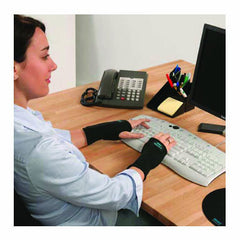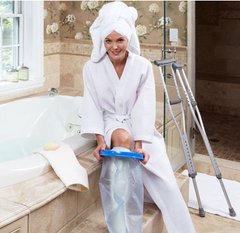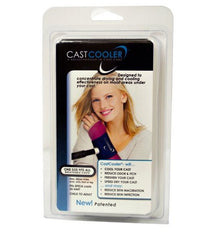 Now that 2014 is well under way, the time has come to review your professional marketing practices. If you own or manage your own medical clinic, it is crucial to stay up to date with current best practices in the world of business. It is no secret that social media has emerged as a critical piece of the marketing strategy pie. Doctors and social media are no longer an odd pair. For those who have not yet made the leap into social media, and even for those who have but have not yet maximized its great commercial potential, this may seem overwhelming. However, with a little investment of time and effort, these platforms can truly catapult your business forward in the year 2014. Over the coming weeks, we will be reviewing some of the most important guidelines for physicians looking to grow their practice with social media. Today we will begin with some of the basics and also address a common mistake many businesses make in their social media activity.
Now that 2014 is well under way, the time has come to review your professional marketing practices. If you own or manage your own medical clinic, it is crucial to stay up to date with current best practices in the world of business. It is no secret that social media has emerged as a critical piece of the marketing strategy pie. Doctors and social media are no longer an odd pair. For those who have not yet made the leap into social media, and even for those who have but have not yet maximized its great commercial potential, this may seem overwhelming. However, with a little investment of time and effort, these platforms can truly catapult your business forward in the year 2014. Over the coming weeks, we will be reviewing some of the most important guidelines for physicians looking to grow their practice with social media. Today we will begin with some of the basics and also address a common mistake many businesses make in their social media activity.
Set up your Company Page
Of course, setting up a company page in the following four social media platforms is an absolute must:
- GooglePlus
Each of these sites allows you to construct a page devoted to your business and your brand name. By doing so, you expose yourself to millions of social media users throughout the world. Even if you wish to focus on a narrower local market, people are turning more and more to these platforms to get the information they need as they decide which business to patronize. If you are a physician, you know there are many choices out there for your potential patients. Maintaining a company page on each of these sites is the 2014 version of setting up your office; without it, you will have a hard time finding or retaining any patients.
What Should I Post?
After you have set up your online identity, you need to build brand awareness by engaging with online users across these platforms. A very typical mistake that business owners commit once they have their company pages is that they assume that they should use this new platform to self-promote. This is understandable, but a poor strategy. Unlike television or radio, where the audience tends to stick around for the most part even during the commercials, the social media user is in complete control. He will not hesitate before clicking on the next image that attracts his attention. Therefore, singing your own praises and directly persuading people to be your patients should be done very sparingly. Most people simply aren’t interested. The majority of your posts should have one goal in mind: to provide interesting content to your users. Here are some suggested ideas for posts:
- Links to articles about your field
- Funny images that relate to your area of specialty
- Informal behind-the-scenes information about your office
- Health tips
- Colorful greetings around the holidays
These are just a few ideas of what you might post. Be sure to keep it relevant, interesting, and always try to include an appealing image. Just ask yourself: if this post came across your newsfeed, would you have any interest in reading it?
Engage with Your Customers
One of the most powerful aspects of social media is the channel of communication it opens up for businesses and customers. Take advantage! Invite your clients and potential clients to ask questions, make suggestions, and share their thoughts with you. You’d be surprised just how valuable people find that kind of a forum. Don’t worry; you can moderate what is said at all times. Granting people the chance to voice their opinions empowers them, and ultimately makes them feel comfortable in your space.
Remember, social media is a powerful tool to reach new customers and retain former ones. You really can’t afford to ignore these channels anymore! Stay tuned for Part II of this series, when we will explore how to grow your followers in each of the major social media.
Lastly, don't forget to check out the opportunities that DryCast offers to help your practice grow. Become a distributor of our wide range of orthopedic and wrist care products. Help your patients, and earn revenue for your clinic. Learn more here!




 Arthritis is a condition which affects millions of Americans. The
Arthritis is a condition which affects millions of Americans. The  When you think about jobs with risk of injury, what comes to mind? Fire fighters, police officers, and construction workers probably rank high on most people’s lists. But did you know that even the most sedentary jobs involving simple physical activities, like computer data entry, carry the risk of on-the-job injury?
When you think about jobs with risk of injury, what comes to mind? Fire fighters, police officers, and construction workers probably rank high on most people’s lists. But did you know that even the most sedentary jobs involving simple physical activities, like computer data entry, carry the risk of on-the-job injury? After coming home with a cast, there are lots of things you now have to consider:
After coming home with a cast, there are lots of things you now have to consider: Let’s be honest: we all like to save a buck when we can. If the opportunity to avoid spending the extra cash presents itself, we usually jump at it. That’s why it’s no surprise that countless cast-wearers attempt to devise their own cast cover for the shower in the hope of saving some money. “Why spend money on a professionally designed cast cover when I can just jimmy-rig something myself?” Invariably, the most common contraption people come up with is the garbage bag cover. Whether it’s a broken leg or broken arm, many people believe that by simply wrapping a garbage bag around the cast, they can safely prevent their cast from getting wet. The more advanced garbage bag users will wind a rubber band at the end of the bag to try to seal up the hole, or tie up the bag in some other way.
Let’s be honest: we all like to save a buck when we can. If the opportunity to avoid spending the extra cash presents itself, we usually jump at it. That’s why it’s no surprise that countless cast-wearers attempt to devise their own cast cover for the shower in the hope of saving some money. “Why spend money on a professionally designed cast cover when I can just jimmy-rig something myself?” Invariably, the most common contraption people come up with is the garbage bag cover. Whether it’s a broken leg or broken arm, many people believe that by simply wrapping a garbage bag around the cast, they can safely prevent their cast from getting wet. The more advanced garbage bag users will wind a rubber band at the end of the bag to try to seal up the hole, or tie up the bag in some other way. Learning how to function while wearing a cast is no easy feat. Whether you are trying to get dressed with a broken arm, walk with a leg cast, or write with a cast on your writing hand, living with a fractured limb can be daunting and difficult. If you rely on your car to get to work every day (or for carpool), no doubt you are also wondering: Can I drive while wearing a cast?
Learning how to function while wearing a cast is no easy feat. Whether you are trying to get dressed with a broken arm, walk with a leg cast, or write with a cast on your writing hand, living with a fractured limb can be daunting and difficult. If you rely on your car to get to work every day (or for carpool), no doubt you are also wondering: Can I drive while wearing a cast? Need immediate cast relief from itchiness, perspiration, or odor? You are not alone! As millions of cast wearers everywhere will attest to, keeping an orthopedic cast clean, dry, and comfortable is no easy task. Whether it’s bacteria and moisture buildup from perspiration, accidental wetting of the cast lining, or the inevitable odor and itch that are part-and-parcel of wearing a cast for weeks on end, cooling cast relief is in high order.
Need immediate cast relief from itchiness, perspiration, or odor? You are not alone! As millions of cast wearers everywhere will attest to, keeping an orthopedic cast clean, dry, and comfortable is no easy task. Whether it’s bacteria and moisture buildup from perspiration, accidental wetting of the cast lining, or the inevitable odor and itch that are part-and-parcel of wearing a cast for weeks on end, cooling cast relief is in high order.
 We all know how physically painful a broken arm or leg can be. But beyond the physical discomfort, a sometimes overlooked aspect of being in a cast is the emotional toll it can take on the patient. While dealing with the pain and discomfort of a broken leg, a person may also begin to develop mental or emotional distress. It is important to recognize that this is a very normal part of the experience of being in a cast. After all, having a cast means that many of your normal activities need to be modified and sometimes even abandoned altogether:
We all know how physically painful a broken arm or leg can be. But beyond the physical discomfort, a sometimes overlooked aspect of being in a cast is the emotional toll it can take on the patient. While dealing with the pain and discomfort of a broken leg, a person may also begin to develop mental or emotional distress. It is important to recognize that this is a very normal part of the experience of being in a cast. After all, having a cast means that many of your normal activities need to be modified and sometimes even abandoned altogether: As most cast wearers will tell you, broken bones, fractured limbs, and wearing a cast can be a real pain…but if you follow these expert cast care tips, you can ensure that your cast does its job, that your bones heal properly, and that you are on the road to a full and speedy recovery.
As most cast wearers will tell you, broken bones, fractured limbs, and wearing a cast can be a real pain…but if you follow these expert cast care tips, you can ensure that your cast does its job, that your bones heal properly, and that you are on the road to a full and speedy recovery.












